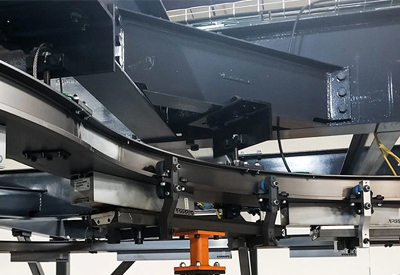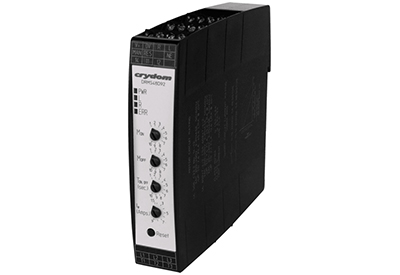One Smart Conveyor. Boundless Possibilities.

July 3, 2019
Based on independent cart technology, new KS BOLT system solves assembly buffering challenges – and features extraordinary flexibility
In any automotive body shop, transferring subassemblies accurately and efficiently from Point A to Point B is critical. But achieving optimal throughput is not just a matter of speed. It requires a conveyance strategy that can accommodate downtime in some systems without slowing production in others.
“Manufacturing isn’t perfect,” said Kevin Laurence, director, advanced technology group, KUKA Systems. “You’re never going to have a part come in one dock and out another at the same rate. Too many things can go wrong.”
Buffering zones address this challenge and enable plants to achieve output goals despite potential roadblocks. Based on accumulating conveyors, buffering zones allow one system to feed another at a steady rate – and store the output of a producing system if consumption slows or stops down the line.
But in recent years, as body shops moved toward mixed-model assembly and began assuming production for more subsystems, conventional buffering often fell short.
“These buffering systems simply grew beyond their original intent,” Laurence explained. “The system that was supposed to keep the plant running didn’t have the necessary agility – and was prone to downtime itself.”
A Better Approach for Modern Plants
To address the realities of the contemporary assembly plant, KUKA SystemsNorth America recently developed the KS BOLT buffering overhead linear transport system. KUKA Systems North America is part of Germany-based KUKA AG, the world’s leading provider of production systems in the automotive industry.
The KS BOLT system is in sharp contrast to conventional “over under” conveyance configurations.
Unlike conventional buffering, which uses friction-based conveyance, the KS BOLT relies on independent cart technology from MagneMotion®, a Rockwell Automation company. The system features QuickStick® intelligent conveyors.
Comprised of a linear motor and built-in motor controller, the QuickStick system uses integrated position sensing to enable independent control of separate carriers on a loop-style track. Accelerations, decelerations, velocities and positions are programmable.
The Power of Embedded Intelligence
“Linear motor technology makes the KS BOLT a very smart system,” Laurence said. “Since position sensors are embedded into the motor, you know exactly where each carrier and each part is at all times.”
Conversely, conventional conveyors rely on external proximity sensors to monitor pallet movement on the belt, but are unable to control or track individual payloads. And while conventional conveyors run in one direction only, the KS BOLT is bidirectional.
“Bidirectional functionality is particularly helpful when producing and consuming systems get out of sync,” Laurence said. “Because the intelligent system always knows where all parts are, it can automatically and independently transport the proper model as needed.”
The KS BOLT is also an efficient solution that eases proper sequencing in multi-model plants. To help achieve the correct part sequence for each vehicle, many plants establish selectivity banks, with separate conveyance systems transporting the parts for each model.
“An assembly plant can replace selectivity banks and separate conveyors with a single KS BOLT system, thanks to its exceptional tracking ability,” Laurence said.
Fewer Components. Easier Maintenance.
Featuring a modular design, the KS BOLT system is also built for easy maintainability.
“Essentially, there are very few things that can go wrong on a KS BOLT system, because there are so few components,” Laurence said.
The KS BOLT includes an extruded aluminum track, solid-state QuickStick linear motor technology, zero-maintenance carriers – plus roller cluster wheel assemblies.
“The health status of the linear motors is independently monitored for power draw changes to enable predictive maintenance,” Laurence said. “In the rare instance a motor must be exchanged, the KS BOLT delivers alerts through the control system.”
And if a roller cluster or wheel needs repair, the system pinpoints exactly which carrier is having the issue. In contrast to friction-based systems, repairable components are easily accessible from outside the track.
Poised for the Future
Perhaps the real beauty of the KS BOLT is its adaptability to a wide range of industrial applications – and future manufacturing requirements.
“Keep in mind, this system isn’t restricted to automotive assembly plants,” Laurence said. “It is an ideal choice for a wide range of scenarios.”
Regardless of industry, the modular, pre-engineered design allows customers to easily add more track sections or change the track configuration to fit a different application.
“Historically, buffering conveyors were expendable – each new plant or application required a new system,” Laurence said. “We’ve changed that mentality. We think the KS BOLT is the last conveyor you will need.”
Learn more about how Rockwell Automation helps improve machine builder performance.
Oriniginal article HERE







